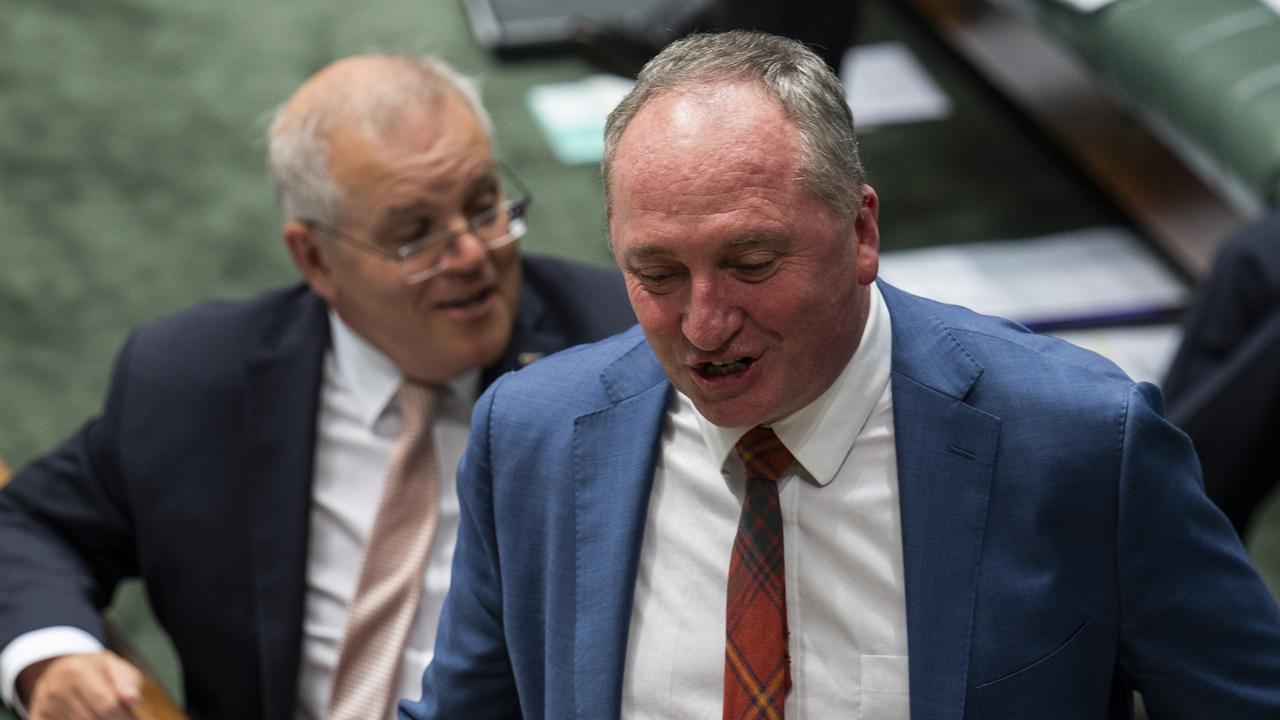What federal government’s net zero plan will look like for Queensland
A number of Queensland cities are set to capitalise on the federal government’s plan to hit net zero emissions by 2050. Here’s what it means for you.
QLD News
Don't miss out on the headlines from QLD News. Followed categories will be added to My News.
Power prices won’t rise, 100,000 jobs will be created and there will be solar panels on one-in-two roofs, the Morrison government is predicting under its plan to reach net zero emissions by 2050.
Prime Minister Scott Morrison said he had “kept the faith” with regional Queenslanders, who backed the Coalition in the 2019 election, with the plan outlining 12,000 new mining and heavy industry jobs in Queensland alone.
Gladstone is projected to capitalise on hydrogen, renewable and low-emissions aluminium, while Townsville will host the “world’s first green zinc facility”, while Australian exports including in critical minerals will triple by 2050.
But Mr Morrison remained noncommittal on the proposed Collinsville coal-fired power station, saying it will proceed “if it stacks up” commercially and meets environmental regulation.

There was no modelling for the net zero scheme released, with Mr Morrison saying it would be done at a later date, while the plan was said to be “based on existing policies”.
While the announcement has settled some net zero critics in the Coalition ranks, the Opposition accused the government of saying “one thing to southeast Queensland and another to the regions”.
According to the plan there will “still be some coal and a significant proportion of gas in the electricity grid in 2050”.
“Coal and gas export industries will continue through to 2050 and beyond, supporting jobs and regional communities,” the plan stated.
The $20bn technology road map to get to net zero emissions by 2050 released on Tuesday was heavily reliant on emerging technologies like hydrogen and carbon capture and storage becoming viable.
There were no carve outs for specific industries to be exempt from emissions reductions, with agriculture, transport, mining and more all modelled to carry their share.
But Mr Morrison said there would be no laws brought into force and no mandate to shut down industries.
“It will not shut down our coal and gas production or exports. It will not increase electricity bills… It’s not a revolution, it’s a careful evolution,” he said.
“What I’ll say is we’ve kept the faith. We said we wouldn’t have a 45 per cent emissions reduction target for 2030. That was the wrong plan for Australia. It’s still the wrong plan.”
The indicated 40 per cent of the reduction would come from the technology road map, like hydrogen, ultra-low-cost solar and batteries, 15 per cent from global technology trends like electric vehicles, 10-20 per cent from offsets while another 15 per cent is “further technology breakthroughs” in areas still being researched. like low emissions concrete.
Asked about whether the proposed Collinsville coal-fire power station could proceed under net zero, Mr Morrison said the feasibility study his government committed to prior to the 2019 election was not due until June next year.

“Any investments that people wish to make, they have to meet the necessary planning and other regulatory approvals for them to go ahead… If they stack up, they stack up,” he said.
Groom MP Garth Hamilton, who has previously raised concerns about the policy, said it was not his preferred option, but accepted it was the way the government was going.
“If I disagree with something, I will say so. I’m not here to sit on the sidelines,” he said.
“The work in front of me now is to make sure it doesn’t become net zero per industry, or net zero per business.”
Townsville-based Coalition Senator Susan McDonald said she supported the government’s plan to hit net zero by 2050, with her position one informed by Queensland’s agriculture sector and the communities that rely on it.
“When I have graziers in Charters Towers and abattoir workers at Kilcoy saying the same thing to me – which is they want recognition for the world leading work they are doing to ensure they are not only achieving but exceeding emissions reductions target while increasing profitability, productivity and employing a workforce – then that’s who I’m listening to,” she said.
Queensland Labor frontbencher Murray Watt said it was a matter of trust, accusing the Morrison government of saying that they think cities and the regions want to hear.
“He and his Liberal MPs tell the southeast that their net zero plan shows they’re dealing with climate change, and then he gets his Nationals MPs to oppose it in the bush,” Senator Watt said.
CEO of Sunshine Coast-based solar farm developer Enertech Luciano Giangiodano said he wanted to see “a real plan, rather than nebulous motherhood statements”.
“I would like to see a true, open and transparent mechanism that incentivises people to invest in new technology.
More Coverage
Originally published as What federal government’s net zero plan will look like for Queensland





